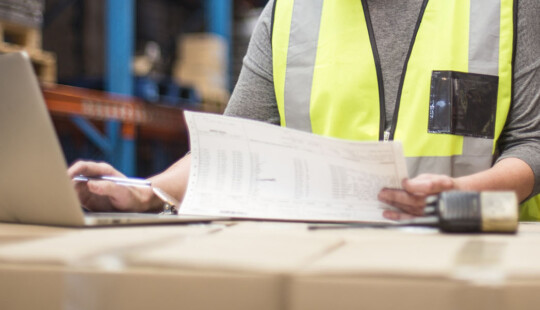Last week the UN Plastics Treaty reached its final stages of negotiations at INC-4 in Ottawa, Canada, to develop a legally binding, international agreement to tackle plastic pollution across the entire plastics life cycle. The fifth and final round of negotiations is due to complete by the end of this year, where an agreement is expected to be formally ratified in 2025.
The treaty represents a once-in-a-lifetime opportunity to unleash the potential of business to solve the plastic crisis. Its success is crucial. Production of new plastic is forecast to double by 2040 without new and effective action. Only 10% of plastic is currently recycled, and each year 19 to 23 million tons of plastic end up in our rivers, lakes, and seas. In addition, greenhouse gas emissions from plastics production, management, and disposal represent around 3.3% of global emissions. Exposure to plastics also has implications on human health, with plastic traces being found in our blood.
Fortunately, there is global consensus on the pressing need to end this ecological and environmental crisis, which is why 160 countries and hundreds of observer organizations are working together on this unique opportunity to end plastic pollution.
A Treaty Addressing the Entire Plastics Value Chain
The existing plastics ecosystem is heavily fragmented. Under current conditions, financial flows fund the creation of virgin polymers while a linear material flow continues bringing new plastics to market.
Centered on regulating production and consumption, the negotiations take every stage of the plastic value chain into account, from creation of the primary polymers to how plastic waste is managed. It covers product design for plastic reduction and recycling as well as extended producer responsibility to increase accountability among the most polluting entities while ensuring a just transition for affected communities.
This is an ambitious project. It will involve redesigning products, making circularity possible through repair, reuse, and recycling, and making recycled polymers more economically viable than virgin plastics.
New jobs, markets, and business opportunities will be created by the treaty. Research and development into plastic alternatives will be accelerated to eliminate the health-harming pollutants from plastic that are released at every stage of plastic production. Additionally, it will require the evolution of waste management systems to deal with the legacy of plastic waste.
SAP Endorses the Business Coalition
The Business Coalition for a Global Plastics Treaty, convened by the Ellen MacArthur Foundation and WWF, assembles businesses and financial institutions committed to supporting the development of an ambitious, effective, and legally binding UN treaty to end plastic pollution.
“To end plastic pollution, we require both ambitious government policy and accelerated business action. The global plastics treaty offers a once-in-a-generation opportunity to put in place the right legally binding rules, measures, and incentives to tackle this global problem,” says Rob Opsomer, executive lead, Plastics and Finance, Ellen MacArthur Foundation.
With over 200 members, including SAP, the Business Coalition for a Global Plastics Treaty is calling for global business rules underpinned by harmonized regulations to tackle the full life cycle of plastic products. This will level the global playing field, making it easier for businesses and investors to scale both upstream and downstream solutions, mobilize the right investments, and support new innovations.
“For decades, SAP software has been instrumental in enabling our customers to manage material flows, including plastics,” says Natasha Pergl, global sustainability lead, SAP Consumer Products. “We understand first-hand the challenges our customers face in managing the complex and fragmented web of regulations in place today that make it difficult to understand current material flows and align upstream efforts with downstream solutions.”
SAP Calls for Harmonization
Achieving systemic change will require collaboration and joint innovation, which depends on effective, well-functioning communication. Software and network technology are central to bridging the information gap and operationalizing an inclusive plastics ecosystem. The treaty must lay the foundations for harmonized regulations and simplified information flow as well as accelerate the implementation of global rules.
To achieve this, four essential elements need to be in place:
- Common definitions for plastics and packaging to ensure mutual understanding and interoperability: This applies to the categorization of various plastic polymers, how products are structured and denominated, and how they are packaged and sold.
- Harmonization across the plastics life cycle, covering criteria for product design, extended producer responsibility schemes, and assessment for recyclability: This will support businesses to design for circularity and recyclability, ensure that strategic decisions are guided by the capabilities of existing downstream infrastructure, and highlight where new capital investments are needed.
- Harmonized national disclosure schemes to ensure uniformity, comparability, and information transparency: This is essential for giving investors and regulators a base of information for policy steering and decision-making. It will also allow business to harness the full potential of AI-driven innovation to accelerate solutions at scale.
- Recognition of the role of digital tools for traceability: Improved data and the application of digital tracking will enable true progress.
“The treaty goals are ambitious, but with an agreement that focuses on global rules covering product design and material fate, extended producer responsibility schemes, and chemicals of concern, we can unleash the power of global business to deliver the solutions necessary. Importantly, SAP is ready with the processes and systems to help businesses quickly grasp the opportunity and scale impact to end plastic pollution,” says Stephen Jamieson, global head of Circular Economy Solutions, SAP.
Software solutions, such as SAP Responsible Design and Production and SAP Green Token, already allow companies to monitor, measure, and act to facilitate the design of products for a more sustainable and circular economy. But a more effective information flow for better collaboration and innovation is required to achieve systemic change.
The Role of AI
An obvious benefit of agreed common terminology and harmonization of criteria and disclosure rules is that it can open the door for businesses to leverage AI. Some envisaged applications in the production process include reducing virgin polymers and boosting material and supply chain efficiency. Downstream uses such as waste sorting, material recovery, quality control, identifying waste flow trends, and predictive analytics would also be made possible.
A Bold Approach
Discussions in Ottawa were productive and focused on decreasing and restricting plastic production. During the talks, Rwanda and Peru submitted a motion to reduce the production of primary plastic polymers worldwide by 40% by 2040, from a 2025 baseline. Their vision is for this to be legally binding, much like the Paris Agreement to limit global warming.
Robust data clarity and systems for sharing information are crucial for enabling businesses in the implementation of such a treaty. Only by connecting data points throughout the supply chain and across jurisdictions can material flows and emission sources be fully understood.
Work will continue towards INC-5 in Busan, South Korea, in November, where the final text will be agreed prior to being ratified in 2025.
For more information:
Heather Davies is a brand journalist.



